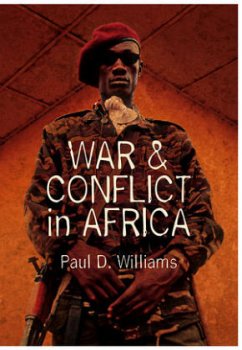After the Cold War, Africa earned the dubious distinction of being the world's most bloody continent. But how can we explain this proliferation of armed conflicts? What caused them and what were their main characteristics? And what did the world's governments do to stop them?
In addressing these and other questions, Paul Williams offers the first comparative assessment of more than two hundred armed conflicts which took place in Africa between 1990 and 2009 - from the continental catastrophe in the Democratic Republic of Congo to the environmental disaster in the Niger Delta and mass atrocities in the Sudan. Taking a broad comparative approach to examine the political contexts in which these wars occurred, he explores the key ingredients that provoked them and the major international responses undertaken to deliver lasting peace.
Part I, Contexts provides an overview of the most important attempts to measure the number and scale of Africa's armed conflicts and provides a conceptual and political sketch of the terrain of struggle upon which these wars were waged.
Part II, Ingredients analyses the role of five widely debated features of Africa's wars: the dynamics of neopatrimonial systems of governance; the construction and manipulation of ethnic identities; questions of sovereignty and self-determination; as well as the impact of natural resources and religion.
Part III, Responses, discusses four major international reactions to Africa's wars: attempts to build a new institutional architecture to help promote peace and security on the continent; this architecture's two main policy instruments, peacemaking initiatives and peacekeeping operations; and efforts to develop the continent.
War and Conflict in Africa will be essential reading for all students of international peace and security studies as well as Africa's international relations.
In addressing these and other questions, Paul Williams offers the first comparative assessment of more than two hundred armed conflicts which took place in Africa between 1990 and 2009 - from the continental catastrophe in the Democratic Republic of Congo to the environmental disaster in the Niger Delta and mass atrocities in the Sudan. Taking a broad comparative approach to examine the political contexts in which these wars occurred, he explores the key ingredients that provoked them and the major international responses undertaken to deliver lasting peace.
Part I, Contexts provides an overview of the most important attempts to measure the number and scale of Africa's armed conflicts and provides a conceptual and political sketch of the terrain of struggle upon which these wars were waged.
Part II, Ingredients analyses the role of five widely debated features of Africa's wars: the dynamics of neopatrimonial systems of governance; the construction and manipulation of ethnic identities; questions of sovereignty and self-determination; as well as the impact of natural resources and religion.
Part III, Responses, discusses four major international reactions to Africa's wars: attempts to build a new institutional architecture to help promote peace and security on the continent; this architecture's two main policy instruments, peacemaking initiatives and peacekeeping operations; and efforts to develop the continent.
War and Conflict in Africa will be essential reading for all students of international peace and security studies as well as Africa's international relations.

